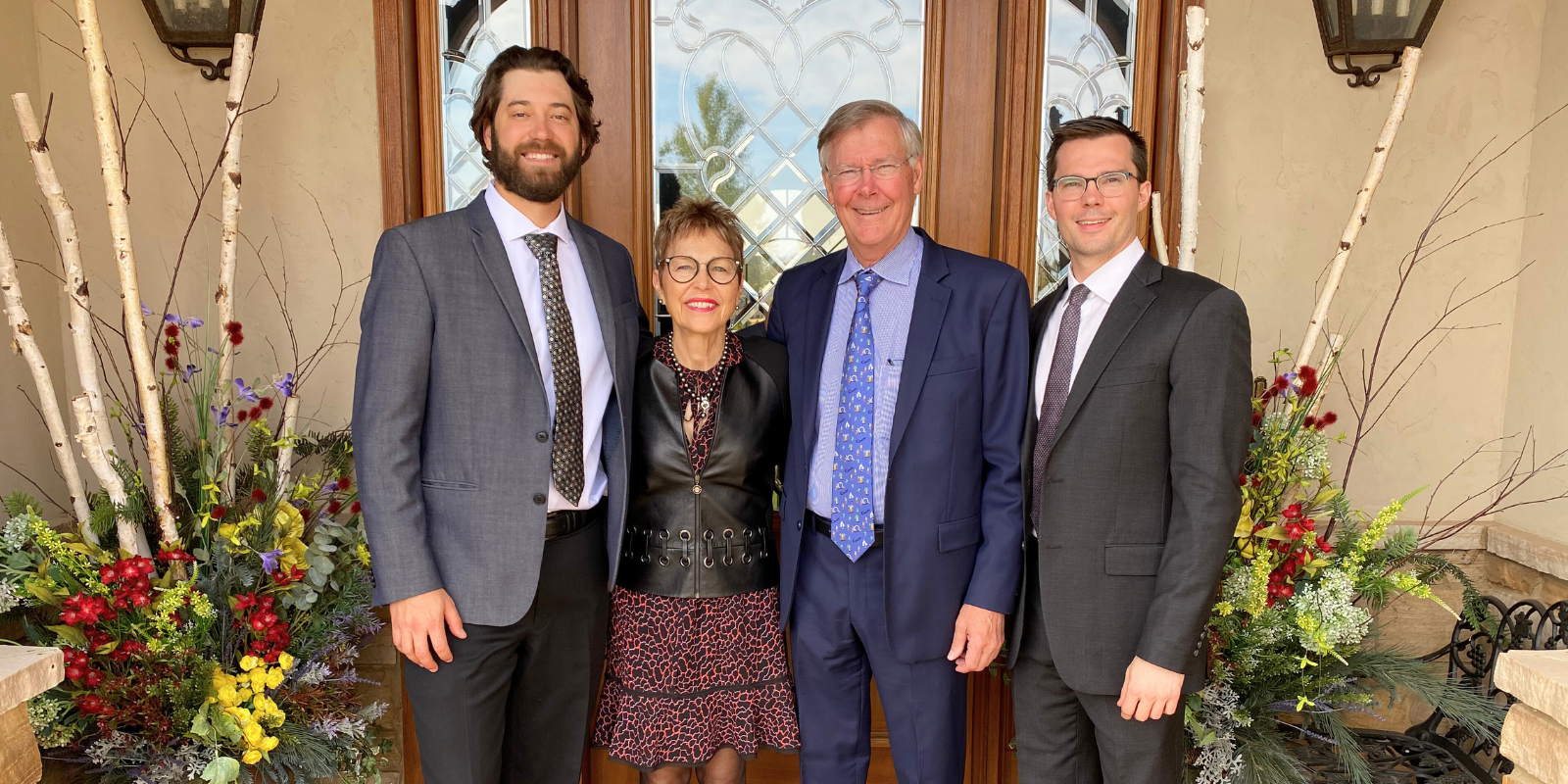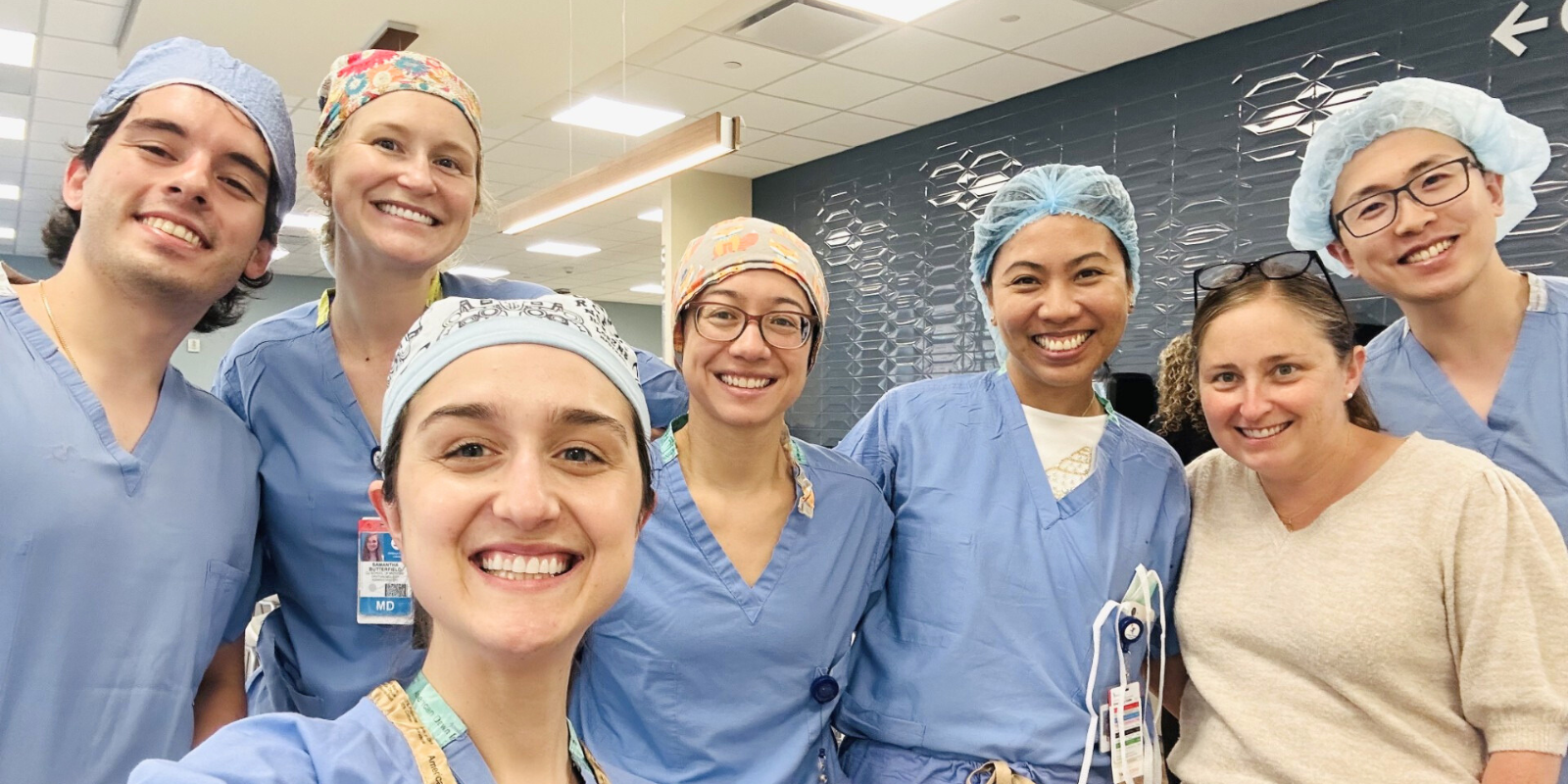This summer’s latest cohort of medical students completing a one-month ophthalmology away rotation at the University of Colorado School of Medicine will return to their home institutions with new experiences, more connections, and a better sense of what they want in a residency program.
“One of the best parts about ophthalmology, and what drew me in in the first place, was the variety they get to experience. Here at CU, every day has been different,” says Marlow Schulz, a fourth-year medical student from the University of Washington School of Medicine. “We experience clinic, observe surgeries, and see patients in the emergency department. There’s such a range, and it’s never boring.”
Each year, the Department of Ophthalmology welcomes about a dozen medical students out of more than 100 applicants to experience what it might be like to be a resident. Schulz and three additional fourth-year medical students — Nate Ashby from Creighton University, Alex Brown from the University of Arizona College of Medicine, and Mira Shoukry of the Mayo Clinic Alix School of Medicine — completed the latest rotation in August.
Michael Puente, MD, assistant professor of ophthalmology and director of the department’s Medical Student Education program, describes the experience as a way for medical students to get to know the residency program and allows faculty to share the fundamentals of the field.
“Our visiting medical students get to see a top-notch residency program and experience the opportunities and resources our trainees have access to,” Puente says. “They get a taste of what it’s like to be in our residency program and our values of providing exceptional eye care to every patient, regardless of who that patient is.”
Previewing the ophthalmology residency
During the rotation, students spend two weeks at UCHealth, one week at Children’s Hospital Colorado, and one week at Denver Health working alongside faculty and residents to develop a foundation of fundamentals that will help them transition into a residency program.
“When I started medical school, I knew I wanted to do something surgical,” Shoukry says. “And while many ophthalmology procedures are shorter, they have a huge impact on a patient’s life. I got to see so many aspects of ophthalmology while I’ve been on this rotation, like treating glaucoma and oculoplastics.”

Fourth-year medical students participating in the away rotation with the Department of Ophthalmology, left to right: Marlow Schulz, Mira Shoukry, Alex Brown, and Nate Ashby.
The program is designed so that students get exposure to a variety of facets of ophthalmology, just as residents do. Puente says this in part helps the students decide if the program might be a good fit. Students typically complete the rotation before applying to residency programs.
“This program is great at letting visiting students decide what we want to see. If there’s something you want to experience, all you have to do is ask,” Schulz says.
In getting to know the field, students are also learning about the department’s culture and whether it might be a good fit for the next four years.
“There are a lot of specifics you look for in a residency program that you hope to match with, but one of the most valuable parts of an away rotation is getting a sense of the program,” Schulz says. “How the residents interact with each other, how they interact with their attendings, and how their attendings interact with each other and patients is something you don’t know unless you experience it first.”
Brown echoes that as a perk of away rotations.
“When you’re here in person you get to interact with so many people of the department. It’s been a wonderful experience,” he says.
Exposure to specialized care
Over the course of the four weeks, medical students are introduced to various ophthalmology sub-specialties with the goal of deepening their interests and opening their eyes to future possibilities in the field.
“Working at Children’s Hospital Colorado made me more likely to think about pediatric ophthalmology in the future,” Ashby says. “It’s amazing what pediatric ophthalmologists can do to help their patients. There’s such an art to the exam.”
For Brown, observing retinal surgeries for the first time and learning more about the skills needed to perform those procedures was a highlight of the program.
“It ended up being fascinating for me, especially learning how different those surgeries are from others that ophthalmologists do,” he says.
Puente’s hope is that rotating medical students gain exposure to as much as the residency program has to offer so that students can feel confident as they move into their next step of training.
“The students get to interact with experts from every ophthalmic subspecialty,” Puente says. “It’s a great learning opportunity for these students. Our hope is that they see what we’re doing, see our values, and want to be a part of it and apply to our residency program.”



